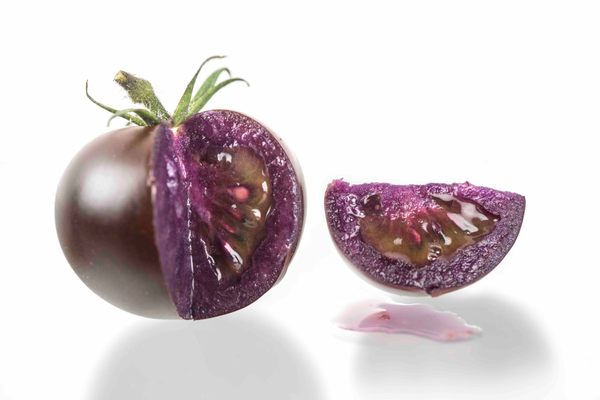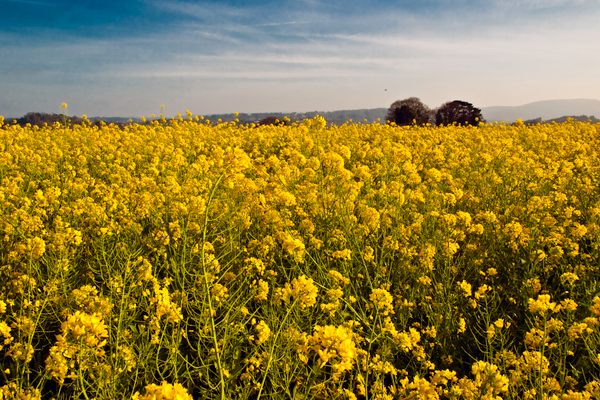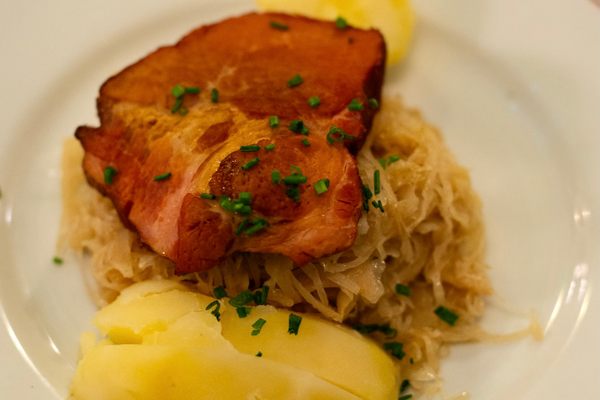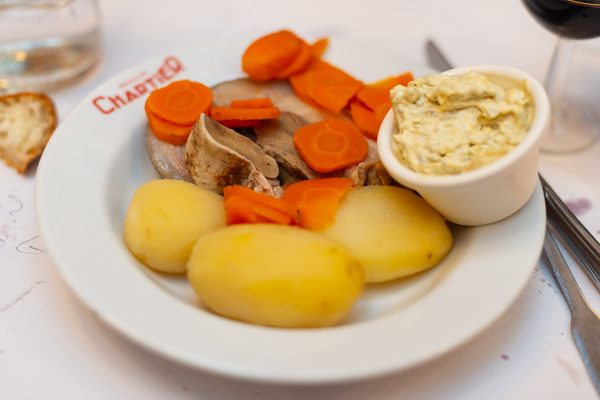The ‘Wine Archive’ That Quietly Improves the World’s Wine
A collection of more than 7,000 grapevine varieties is a boon to vintners and scientists.

Planted in the sandy soil between the Thau lagoon and the Mediterranean-fronting beaches of Marseillan, France, is a 27-hectare vineyard (about 67 acres) containing the most comprehensive array of living grapevines on the planet. Known as the Center of Biological Resources of the Vine of Vassal-Montpellier (CRB-Vigne), it is home to about 8,200 different varieties from 52 countries. Some of the plants are more than 150 years old. Many were gleaned from the world’s most ancient vineyards.
For viticulturists and winemakers, the CRB-Vigne is nothing short of a mecca. Many speak of visiting with a reverence typically reserved for religious sites.
“You go there and you are just overwhelmed by the scope of what is growing,” says Gabrielle Rausse, who is currently the head winemaker at Jefferson Vineyards. Containing five specimens per variety, the collection features an almost unfathomable diversity. What’s more, the vines are cataloged according to historical use, native region, physical characteristics, and genetic profile (including parentage, progeny, and relatives). Samples of rare medieval varieties are planted alongside modern descendants such as merlot or cabernet sauvignon. “It is like a living history book,” Rausse adds. “You walk through the rows and here is an almost total history of grapes and winemaking, right before your eyes.”
Better still, with a staff of top-notch researchers for tour guides, the experience is interactive. Winemakers fly thousands of miles to discuss varieties they are cultivating and inquire about potential additions. Growers interested in founding a vineyard often ask about climate and soil conditions, and varieties that may produce the best or most interesting wines where they live. Sometimes, scientists provide growers with samples and work with them to research how the plants respond in new areas.
Rausse consulted with the CRB-Vigne while working to bring Thomas Jefferson’s dream of a Virginia vineyard to life in the early 1980s. (At the time, trying to grow premium wine in Virginia was considered crazy.) Following Jefferson’s gardening notes, Rausse inquired about historical varieties from North Africa that Jefferson had speculated would do well at his home in Monticello.
“If a region produces wine, then winemakers from that area have been in contact with us to talk about what they have, or what they should be growing,” says Jean-Michel Boursiquot, scientific director of the CRB-Vigne, which is now managed by Montpellier SupAgro. “This is because, here, we have compiled the most comprehensive body of [viticultural] knowledge in the world. It is our job to share this resource with other professionals.”
According to Boursiquot, if a person wants to know something about grape varieties, the answer can likely be found at Vassal-Montpellier. “And if we cannot answer the question, then it is probably something new,” he adds with a laugh. “Then we will begin to investigate and see what we can do. In the process, maybe we make a new discovery!”

The collection at Vassal-Montpellier has its origins in the Great French Wine Blight of the 1850s, ‘60s, and ‘70s. When wild vines from the New World were introduced to Europe in the early 19th century, they brought along new pests and diseases. Though North American varieties were naturally immune, European vines were not. The result was a massive die-off that ultimately led to a 50 percent reduction in French winemaking.
In the early 1870s, the primary culprit was discovered to be an aphid known as Daktulosphaira vitifoliae (now commonly referred to as grape phylloxera). Realizing that the bugs—and also virus-carrying nematodes—would be unable to reproduce in sandy conditions, scientists at the School of Agriculture of Montpellier scrambled to collect samples of as many French grape varieties as possible. Traveling the country, they took cuttings from vineyards and transplanted them to the school’s sandy grounds for safekeeping.
“The blight was like a wine doomsday,” says Rausse. There was true fear that many varieties had already gone, or might soon go, extinct. “This was the scientists’ plan to save French vines and keep them alive for the future. Eventually, someone would discover a cure for phylloxera, and the plants could be used to rebuild the vineyards.”
But as the collection grew, something interesting happened: Its mission expanded as well.
“First, the idea transitions from a focus on France, to include samples from other wine regions as well,” says Boursiquot. Fearing future calamities—and a subsequent loss of beloved regional grapes—expeditions were mounted to collect samples from prized vineyards in Spain, Portugal, Italy, North Africa, and elsewhere.
By 1949, the increased stock necessitated additional space. That year the vines were moved to Domaine de Vassal, a university-owned estate bordering the small seaside town of Marseillan. Varieties were planted side by side in long rectangular plots positioned just 30 meters from the sea. Though growing conditions were not ideal for wine production, scientists had no need to fear the spread of diseases, parasites, or viruses. This made the site perfect for a living collection.
“Some time passes, and [the institution] decides to gather wild varieties too, which are, of course, the parents of the first domesticated vines,” Boursiquot says. “At this point, the mission becomes global. They begin to seek to identify and collect samples of every grape variety in the world.”
Today, 400-meter-long greenhouses have been installed to create new cuttings, facilitate research, and to care for rare or endangered samples that arrive in poor condition. Hundreds of varieties are mailed to Vassal-Montpellier for inspection each year. If a visual identification cannot be made, a genetic analysis is undertaken, and the results are cataloged in a database.
Around 400 new varieties have been discovered and added to the collection since 2015. “And we believe there remain many more to be found,” says Boursiquot.

According to Boursiquot, if it wasn’t for the work of Pierre Galet—whom he describes as the most important vine expert of the 20th century—the CRB-Vigne might have taken a very different course.
Born in 1921, Galet was a staunch advocate of preserving genetic diversity and was instrumental in expanding the CRB-Vigne to include wild varieties and older variations no longer deemed desirable for wine making.
The idea, says Boursiquot, was essentially two-fold. On one hand, advances were being made in the emerging field of genetic analysis. As technology improved, a comprehensive collection of vines would enable researchers to map the genetic history of the 18 noble grape varieties such as pinot grigio, viognier, and grenache. Using selective breeding techniques, they could use the genetic information to create hybrids capable of producing wines equal in flavor to their noble brethren, but that are less environmentally damaging to grow.
“From the standpoint of ecology, growing European grape varieties has essentially been unsustainable since the 1870s,” explains Buorsiquot. Following the introduction of New World pathogens, neurotoxic spray treatments were needed to protect vines from imported viruses and diseases. Grafted to non-native rootstock to protect them from phylloxera, synthetic fertilizers and additives were used to fuel their growth.
The process has similar effects to factory farming. “In France, many vineyards are located close to villages, and so you have to worry about [pesticides] getting into the water supply,” says Buorsiquot. Runoff washes fertilizers into streams, he adds, where increased nutrients fuel algal growth that can choke out oxygen and endanger wildlife. But high-quality hybrids bred for natural resistance to North American diseases and pests can greatly reduce, or even eliminate, the need for harmful inputs.
“Professor Galet was one of the first to comprehend this issue,” says Boursiquot. “He saw the collection as a storehouse of genetic material that will help us to reduce environmental damage and, also, allow vineyards to adapt to what we are now calling climate change.”
As Galet’s mentee, Boursiquot assumed the directorship of the CRB-Vigne in 1985.

“When I started, we had to identify everything by eye using physical characteristics like leaf shape, colors, and so on,” he says. Chuckling, he goes on to compare those days to the dark ages. “Of course, the ability to look at genetics changes everything. At first, it was very expensive and sort of like science fiction; we had to learn how to use this new technology effectively.”
For the past 30 years, Boursiquot has worked to implement, develop, and standardize genetic mapping techniques at Vassal-Montpellier. Analyzing the CRB-Vigne’s 70,000-plus-plant collection, he trimmed its official number of varieties from 14,000 to around 7,200. Additionally, he used the methods to make groundbreaking discoveries.
In 1994, Boursiquot located a purportedly extinct variety of noble European grapes growing in Chilean vineyards. Astonished, he and the CRB-Vigne worked to help Chilean growers isolate the variety and reintroduce Carménère, a wine no one had tasted since the 19th century. Today, it is considered the national wine of Chile.
In the late 2000s, Boursiquot identified a medieval variety of grapevine that was previously thought to be a mythical invention, and, through its genetic analysis, revealed the unknown parentage of merlot. He has since partnered with genetic researchers around the world who hope to use clones to create new hybrids that may compete with, or even become, noble varieties.
The effort was an extension of Boursiquot’s work to facilitate partnerships with viticulturalists and winemakers to develop viable hybrids. These days, he says, he spends a lot of time advocating for the European Union to pass legislation that makes it easier to grow hybrids for wine production.
All told, Boursiquot’s efforts have led to the digitization of a 670,000-page database containing what amounts to the world’s collective knowledge of grape vines. The next step, he says, is making it available through the CRB-Vigne’s website.
“His contributions cannot be underestimated,” says Rausse. “They have helped to make the [CRB-Vigne] more than just some crazy biological museum. It is today regarded as the most prestigious genetic research institution in the world, and the primary source of reference for the international community [of winemakers].”
Gastro Obscura covers the world’s most wondrous food and drink.
Sign up for our regular newsletter.






































Follow us on Twitter to get the latest on the world's hidden wonders.
Like us on Facebook to get the latest on the world's hidden wonders.
Follow us on Twitter Like us on Facebook